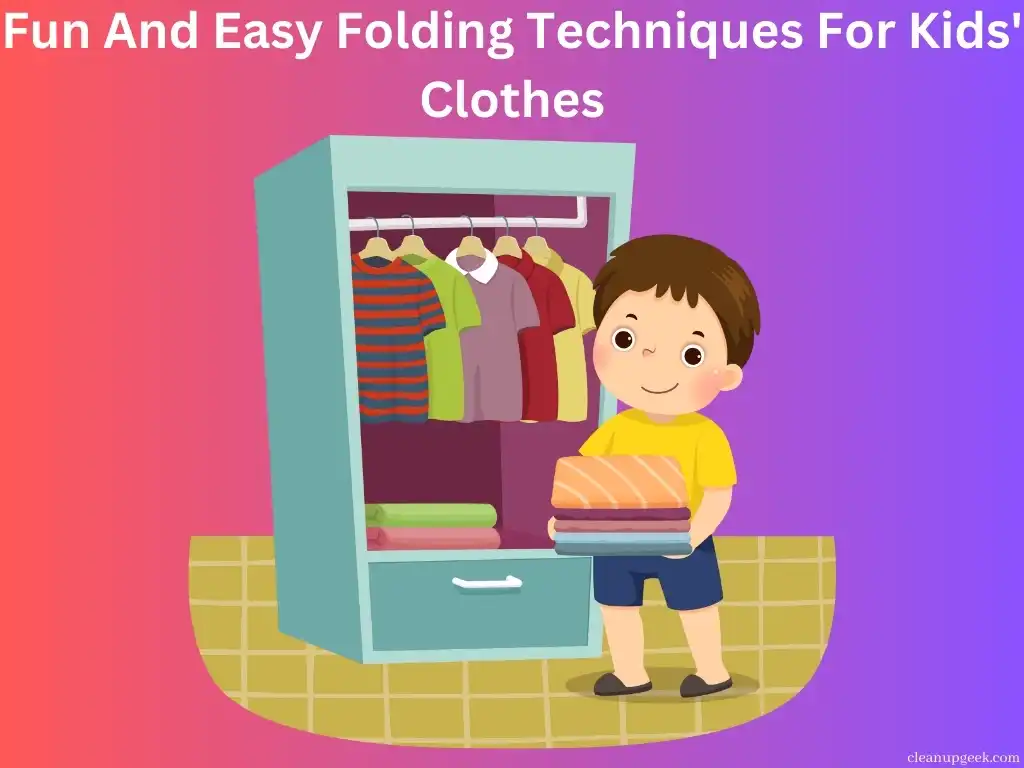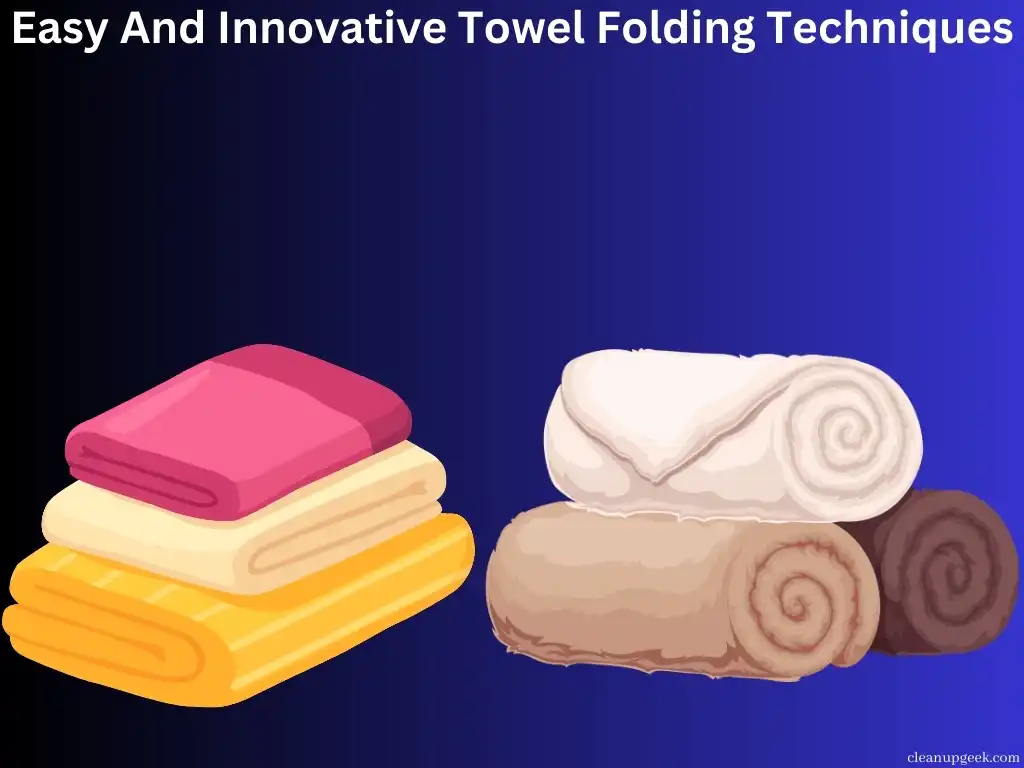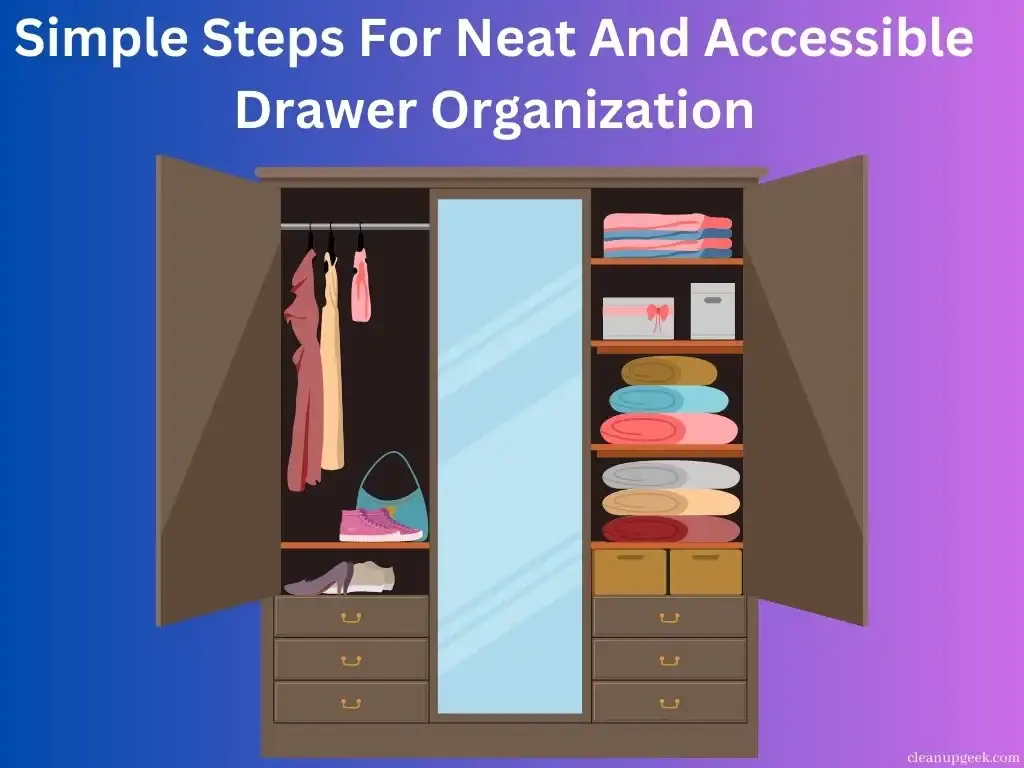Folding children’s clothing can often be overlooked as a teachable moment. Dive into the world of simple yet effective folding practices that save space and time while bringing a spark of fun to the daily routine.
This article will guide you through fun and easy folding techniques to help both you and your little ones manage laundry better.
Let the folding fun begin!
KEY INFORMATION
- Folding kids’ clothes can teach them to be independent and responsible, develop fine motor skills, and save parents time.
- Different folding methods, like the KonMari Method, traditional folding, and pocket folding, keep clothes tidy and make it easier for kids to find what they need.
- Making a DIY laundry folding board is a simple project that can help children fold their clothes neatly.
Benefits of Folding Clothes for Kids

Folding clothes teaches kids independence and responsibility while also developing their fine motor skills. It also saves time and effort in the long run, making it a valuable life skill for children to learn.
Promotes independence and responsibility
Teaching kids to fold their own clothes is a big step towards growing up. When they learn this skill, they can take care of their things by themselves. They start to feel proud because they are helping out and being a part of the team at home.
Also, knowing how to fold clothes is something they will use all their lives.
Having your child help with laundry folding can also make them more responsible. They learn to finish tasks and see how tidy drawers save time finding outfits later on. Plus, using methods like Marie Kondo’s makes keeping dresser drawers neat easier for everyone in the family!
Builds fine motor skills
Folding kids’ clothes can help them develop their fine motor skills, as they use their hands and fingers to create precise folds and manipulate the clothing. This activity requires coordination and control, which are essential for children’s overall development.
By engaging in folding techniques such as the KonMari Method or traditional folding, kids can enhance their dexterity and hand-eye coordination. Additionally, creating a DIY laundry folding board can allow children to practice these skills in a fun and practical way while contributing to household chores.
Supporting children in learning these techniques fosters independence and responsibility while promoting the development of valuable life skills.
It saves time and effort
Folding children’s clothes in a fun and organized way can save you time and effort. The KonMari Method, with its folding techniques, helps keep your drawers clutter-free. Additionally, teaching kids to fold their own clothes as a life skill not only promotes independence but also contributes to household chores, making it easier for them and saving them time in the long run.
Moreover, using DIY laundry folding boards is an innovative way for kids to learn this essential skill while making the process efficient and enjoyable. With these simple techniques and organization strategies, you can easily incorporate clothes folding into your family routine.
By learning how to fold clothes properly through various methods, such as the traditional folding method or pocket folding techniques, kids will gain valuable life skills early on, providing opportunities for both parents’ relief from constant chores and the self-sufficiency of children themselves.
Different Techniques for Folding Kids’ Clothes
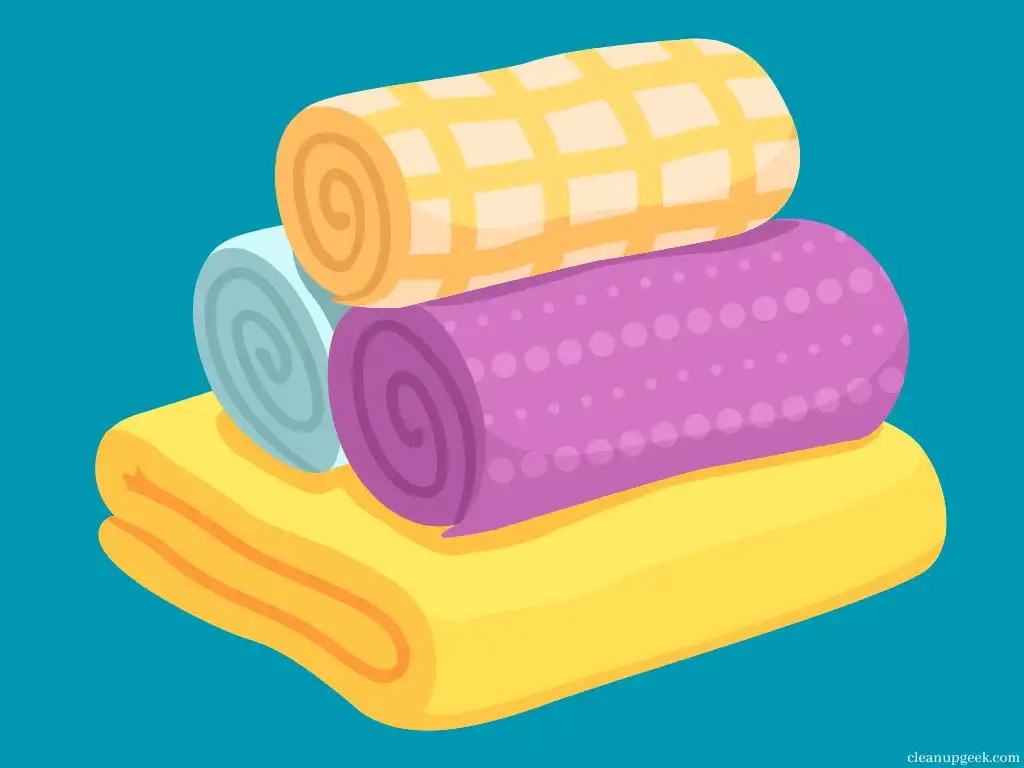
Explore various folding techniques, such as the KonMari Method, traditional folding methods, and pocket folding, to make organizing your kids’ clothes fun and easy. These methods will help keep your little ones’ outfits neat and tidy in their drawers or closets.
KonMari Method
The KonMari Method, popularized by Marie Kondo, emphasizes a specific folding technique to keep clothes organized and easily accessible for kids. This method involves folding clothes into small, neat rectangles that can stand upright in drawers, maximizing space and visibility.
- Start by laying the clothing item flat and folding it into a long rectangle.
- Then, fold the garment into smaller sections until you have a compact rectangle that can stand on its own.
- The KonMari Method is especially effective for organizing kids’ clothes, such as onesies, pants, and t-shirts.
- This folding technique not only saves space but also makes it easier for kids to identify and select their own clothes independently.
- By implementing the KonMari Method for kids‘ clothes folding, parents can encourage a sense of organization and responsibility in their children while simplifying the daily routine.
Traditional Folding Method
The traditional folding method is a simple and effective way to neatly fold kids’ clothes. It is easy for children to learn and can be a practical approach to organizing their attire. Here are the steps to follow when using the traditional folding method:
- Lay the clothing item flat on a clean surface, ensuring that it is smoothed out and free of wrinkles.
- Fold one side of the item towards the center, making sure that the sleeve or pant leg is lined up neatly.
- Repeat the same fold on the other side, so both arms or legs are aligned in parallel.
- Fold the bottom of the garment upwards, creating a clean and straight edge at the top of the item.
- Finally, fold the top part downward to meet the bottom edge, resulting in a compact and tidy fold.
Pocket Folding
Pocket folding is a simple and efficient way to organize kids’ clothes. It helps keep small items, like socks or underwear, together. Here are some steps to pocket folding:
- Lay the garment flat with the pockets facing up.
- Fold one side of the garment towards the center, tucking any sleeves or straps neatly into the pocket.
- Repeat the same process with the other side, ensuring everything is tucked in.
- Finally, fold the bottom of the garment up to meet the top, creating a compact and tidy package.
DIY Laundry Folding Board
Watch this Guide
Title: How To Make A DIY Kids Shirt Folding Board For Super Cheap
By: Wardrobe Hackers
Create your own laundry folding board with just a few simple materials and step-by-step instructions. Read on to learn how to make this handy tool for easier clothes folding!
Materials needed
You’ll need a few simple items to create a DIY laundry folding board for kids:
- A sturdy piece of cardboard or foam board
- A ruler and marker to measure and mark the board
- Scissors to cut the board to size
- Colorful duct tape or decorative paper for covering the board
- Clear adhesive shelf liner or clear packing tape to reinforce the folding lines
Step-by-step instructions
To make folding kids’ clothes fun and easy, you can follow these step-by-step instructions:
- Lay the clothing item flat on a clean surface, such as a table or bed.
- Fold the garment in half lengthwise by bringing one side over to meet the other side.
- Fold the sleeves or pant legs neatly onto the body of the garment.
- Use the KonMari Method by further folding the clothing piece into a smaller rectangle.
- For shirts, fold them in half vertically with the sleeves together. Then fold the arms onto the shirt and fold it in half horizontally.
- Consider using pocket folding for items like socks and small accessories to keep them organized.
Teaching Kids to Fold Their Own Clothes
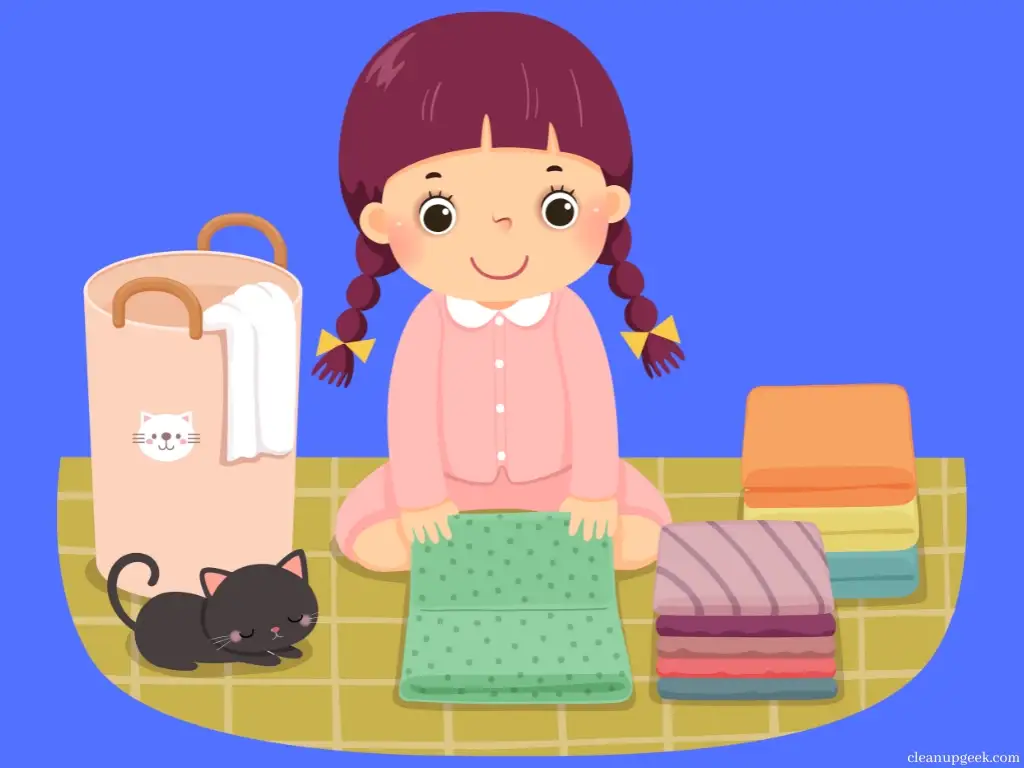
Show your preschoolers how to fold their own clothes with these helpful tips and related activities. Encourage independence and responsibility while making the chore fun for them! Read more for some creative folding techniques and DIY ideas.
Teaching preschoolers
Teaching preschoolers to fold their own clothes is a valuable life skill. It promotes independence and responsibility and also helps in developing their fine motor skills. Here are some tips to make teaching preschoolers how to fold their own clothes easier:
- Keep it simple by starting with easy-to-fold items like t-shirts or pajamas.
- Use visual aids, such as step-by-step pictures or demonstration videos, to show them how to fold each clothing item.
- Break down the folding process into smaller steps and practice one step at a time with them.
- Make it fun by turning folding into a game or competition, such as who can fold the most clothes in a certain amount of time.
- Praise and encourage them as they practice and improve their folding skills.
Tips for Success
When teaching preschoolers to fold their own clothes, make it a fun and interactive activity by using colorful and playful folding techniques. Use visual cues or storytelling to help them remember each step of the folding process.
Additionally, providing positive reinforcement and praise for their efforts can help motivate them to learn this important life skill. Using child-friendly organization solutions can also make the task more enjoyable for kids while promoting independence and responsibility.
For successful teaching of children how to fold clothes, it’s important to break down the steps into simple and manageable tasks. By incorporating related activities such as sorting clothes by color or pattern before folding, kids can develop fine motor skills while making the process more engaging.
Related activities
- Organize a fun folding competition with your kids to see who can fold the most clothes neatly and quickly. This can turn a household chore into an entertaining and engaging activity for the whole family.
- Create a “folding station” in your home, complete with child-friendly folding boards and colorful baskets or bins for sorting and organizing folded clothes. This will make the process more visually appealing and accessible for kids.
- Introduce a “laundry day” routine where everyone in the family participates in sorting, folding, and putting away their own clothes. This instills a sense of responsibility and teamwork while making laundry more manageable.
- Turn folding into a game by challenging kids to match socks or fold small items like hand towels and washcloths into fun shapes. Adding an element of play can make the task more enjoyable for children.
- Use sticker charts or other reward systems to motivate kids to fold their own clothes independently. Positive reinforcement can encourage them to take ownership of this life skill.
Conclusion and final thoughts
In conclusion, teaching kids how to fold their own clothes can benefit them in many ways. It promotes independence and responsibility, builds fine motor skills, and saves time for parents.
By using fun and easy folding techniques like the KonMari Method or DIY laundry folding boards, kids can learn essential life skills while having a good time. Encouraging kids to take part in organizing their clothes from a young age sets the foundation for responsible habits and helps them develop valuable life skills.
FAQs

1. What are some fun ways to fold my kids’ clothes?
You can make folding clothes a game using simple methods like the KonMari Method or turning it into origami-inspired art.
2. Can I teach my preschooler to fold their own clothes?
Sure! Preschoolers can learn to fold their outfits with easy and playful techniques that turn the task into a fun life-skill activity.
3. Is there a tool that helps kids fold clothes?
Yes, you can make or buy a DIY folding board, which makes it easier for kids to neatly fold their laundry.
4. Why should children learn to fold clothes?
Teaching children to fold clothes helps them develop good organization habits and gives them an important life skill.
5. How do I keep my child’s folded clothes organized?
After your kid folds their laundry using easy hacks, you can help them put everything away in drawers or shelves as part of a kid-friendly clothing organization.
